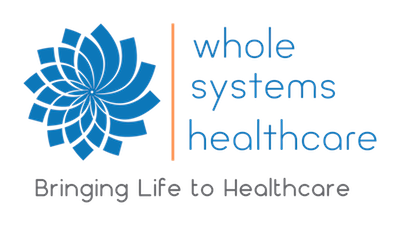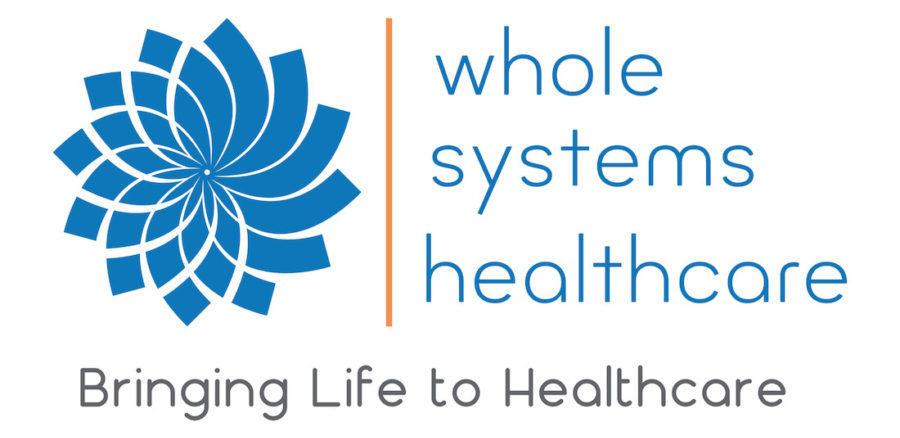The United States healthcare system is in dire need of change. We spend nearly double on healthcare compared with other industrialized nations, and yet our health outcomes continue to lag behind. Our healthcare system has been designed around a medical model oriented toward saving lives and symptom management. However, partly due to its success at saving and prolonging life, chronic disease has emerged as the predominant economic and moral burden on the United States healthcare system. Executive Director Craig Mehrmann has written about the failures to proportionately respond to the chronic disease and mental health crises in the United States through a whole person, integrative approach, highlighting the fact that 90% of United States healthcare dollars, about $3.3 trillion, are spent on managing preventable chronic disease and mental health conditions, while chronic disease accounts for the majority of deaths in the United States and worldwide. In our effort to contribute to progress, Whole Systems Healthcare is pioneering a more holistic and integrative approach to healthcare and is beginning to implement models to create additional perspectives to the current, conventional paradigm.
Modern medicine has a responsibility to expand beyond symptomatic management of disease to include a multidimensional and multi-scale perspective of health and wellness. Healthcare business models currently designed around saving lives and symptom management must meaningfully evolve (or actively coordinate with) systems that follow through toward health restoration, disease prevention, and wellness promotion. This emphasis on health is the necessary foundation for an updated healthcare system that is aligned with the most current medical knowledge, and highlights some existing issues with our current focus on disease care.
Evolving toward a true health care system entails expanding our frame of reference with regard to several predominant assumptions underlying United States healthcare. The sections to follow will briefly summarize these assumptions and how they must evolve on a large scale in order to allow for a more effective and encompassing healthcare model:
- An examination and comparison of health and disease
- Standardized vs. individualized medicine
- The difference between relationships and transactions
- The value of healthcare
- Direct care vs. fee-for-service models
- Using insurance to pay for healthcare
Health vs. Disease
Before diving in, it may be constructive to define health as something beyond the absence of disease. Health is inherently holistic, as it encompasses many different and overlapping spheres, such as the physical, emotional, mental, social, technological, environmental, etc. To be healthy is to have healthy relationships with every part of life: one’s body, home, workplace, and ultimately one’s society. Thus, health is truly multidimensional and depends upon multiple scales of activity, and has a necessarily unique flavor for each individual. For more nuance, read What is Health?.
While health is inherently holistic, disease is inherently reductionistic. By definition, a disease is only a part of a complete person, just as a person’s hair color is only a small part of who they are. Disease could also be thought of as a separate entity, a category, or a pattern that is afflicting a person. Moreover, a disease is generally not considered unique to the individual. A given disease can affect different people; the disease is the same (in theory if not in fact) no matter who has contracted the disease. However, the individual’s response to the disease, and the most effective methods of treatment, are typically unique to the individual.
Standardized vs. Individualized Treatment
Our current medical system emphasizes standardization of treatment. The theoretical framework begins with the diagnosis of the disease, leading to the “ideal” treatment for that disease. Algorithms are created to help practitioners diagnose and treat properly so that they will come as close as possible to this perfect, ideal treatment. The pinnacle of the system occurs when a patient is able to consistently receive this ideal treatment from any doctor, clinic, or hospital.
In contrast to this system of standardized care is individualized treatment. When treatment is tailored to the unique individual, consideration is given to what disease the person has, but equal, if not more consideration, is given to what kind of person has the disease. This meshes well with an increased emphasis on health instead of disease. If it is the person that is of utmost importance, then focusing on their health naturally becomes a priority. Thus, the healthcare paradigm begins to shift from disease-focused to health-oriented.
Another element of individualized care concerns individual practitioners. In a system of standardized treatment, a particular practitioner is valued based on how close they can come to the perfect diagnosis, and therefore the ideal treatment. Standardized care is highly useful for acute and emergency situations, but becomes less helpful for people with stable chronic conditions or mental health concerns. In a more individualized, health-focused paradigm, there is no longer one right way to practice medicine. In addition to providing an individualized approach for a given patient, the individualized approach of a given practitioner is increasingly important. The same patient, going to several different doctors, may receive different treatments, as the doctors are also unique individuals with unique approaches to restoring health. This highlights the next element, which is the importance of the doctor-patient relationship.
Transaction vs. Relationship
A pervasive attitude in healthcare – stemming from our larger socioeconomic system – is the belief that services are transactional. This transactional paradigm fits well with the standardized approach discussed above. When healthcare is transactional in nature, it leads to the subtle belief that the people involved, both the patient and the practitioner, are somehow replaceable. The service, treatment, whatever it is that’s being “paid for,” becomes more important than the people involved in the interaction. You can always go to a different provider of that same service and ostensibly get the same thing. From the perspective of the healthcare practitioner (as well as the healthcare industry at large), patients become objectified, identified by their disease, identical in some way to every other patient with that disease, and commodified in the sense that they get paid to render the service of providing treatment for this disease.
This may be good in other fields, where linear transactions are made for a commodity or standardized service, but in health care, the foundation of healing is the doctor-patient relationship, which is inherently non-linear, non-standardized, and is imbued with the richness and complexity of human connection. This relationship has been studied and examined for thousands of years, and there is ample evidence of the importance of the relationship. However, the focus on transaction obscures the doctor-patient relationship, thereby affecting the treatment and healing process. Therefore, while we cannot remove the element of transaction entirely from healthcare, the goal is to create a transactional model that facilitates an unobstructed doctor-patient relationship as much as possible. By focusing on the doctor-patient relationship, the attitude of healthcare as transactional begins to shift. An important aspect of this shift is in how we place value on health and healthcare.
Health is Priceless
If healthcare services are transactional, then the results of these services must be quantifiable. This fits perfectly within standardized treatment for specific diseases: in the ideal version of the disease care model, a disease is identified, then its standardized treatment is applied which cures the disease. Thus, the value is the difference between having the disease and being free of the disease. The current paradigm leads to this linear approach to healthcare.
However, health is not simply the absence of disease. Examining the transactional model from the other direction reveals the somewhat absurd nature of attempting to put a price on health.
The essence of a transaction is that two things are exchanged that are of equal value. In our modern society, that value has become primarily monetary. As an example, the extreme of this view can be seen in the compensation paid to people that lose limbs in workplace accidents. Each state has a maximum amount that is to be paid for a given limb, whether a finger, hand, foot, etc. To switch this around, is there anybody who would voluntarily lose a limb for money? Granted, there are those who are very poor or desperate, but in general people do not think of their body parts as having price tags.
If health truly is priceless, then it is very difficult to put a value on a given healthcare service. However, relationships are also priceless, and thus emphasizing the doctor-patient relationship instead of the healthcare service starts to make a lot more sense. But then how will doctors and healthcare practitioners earn a living? This leads to the model that Whole Systems Healthcare is working towards, the direct care model.
Fee-For-Service vs. Direct Care
Fee-for-service is the standard way in which we currently pay for healthcare. Practitioners submit treatment codes that purportedly describe what they did with a client or patient, and insurance companies pay based on the specific code. There are thousands of codes, though a practitioner in private practice might only use a handful. This appears to be a good system, but embedded within are constraints and motivations which undermine the doctor-patient relationship.
The amount paid for a given code is decided by the insurance company, not the practitioner, and may not correspond to the actual amount of time or work spent to deliver that particular service. Codes are also strictly defined, which doesn’t leave a lot of space for practitioners that don’t do things exactly by the book, i.e., treat the individual through a holistic approach. This creates an underlying motivation to bill for higher-paying codes, to bill more codes, and to change the patient’s treatment to match these billed codes. In this model, it is difficult for a practitioner to bill in a manner that is consistent with the services actually provided, to submit codes that pay reasonably well, while also providing care that is in the patient’s best interest. It is as though they are being micromanaged by an overarching and administratively burdensome financial system, causing them to become less effective, and in some cases, ineffective. This is often incredibly frustrating for healthcare providers as they try to balance earning a livable wage, managing time, and providing patients the care they most need. Patients might feel equally frustrated with a healthcare system that seems to be failing them
Patients also have a disincentive to seek care. Many people have found themselves asking if they or a loved one is actually sick enough to go to the doctor, knowing they will have to pay. This is unfortunate because getting care at the beginning of illness usually leads to more positive outcomes, but people end up seeking care only when symptoms begin to significantly impact activities of daily living. This usually leads to more intensive and invasive treatment. Ironically, this more intensive and invasive care costs more and drives up healthcare costs, further exacerbating the pattern.
One of the models that Whole Systems Healthcare is implementing in our clinics is direct care. If you haven’t heard of this way of offering primary care, you can read Dr. Ben Schuff’s excellent article, What is Direct Primary Care?. Direct care addresses a number of issues presented by our current healthcare model.
Direct care resolves the issue of motivation that is part of fee-for-service, also referred to as provider-driven demand. The practitioner is not paid by the code, so there is no incentive to give a treatment that will pay more. For the patient, since they are paying regardless of whether they seek care or not, there is every incentive to come in early with any illness, thus saving themselves undue suffering and making it easier to provide less intensive and invasive care.
By moving towards a membership model, practitioners are no longer in the position of delivering healthcare transactionally. The practitioner is no longer being paid specific amounts for specific services; they are supported financially no matter how they want to enter into the therapeutic relationship, giving them a degree of safety and trust that doesn’t exist when their services are more explicitly transactional. Patients also get an opportunity to see their practitioner not only as a provider of services, but as a fellow human being who is walking with them on their journey to health. This is part of shifting the paradigm towards the recognition that health is priceless, while providing a model where practitioners are able to earn a reasonable living.
Direct care also creates the time and space for the interaction that best serves the patient at that visit, creating more individualized treatments. Since practitioners don’t need to adhere to standardized treatment codes, they can be more flexible in what type of care is given. This can also cut down on administrative work, as often practitioners (or other medical staff) must spend extra time taking notes, writing documentation to prove they are performing what they coded for, and coordinating with medical billers and insurance companies. Reducing administrative work helps to make care more affordable, given that the United States spends about 30% of its healthcare money on administration.
Insurance for Health
Our current healthcare system is highly dependent on insurance. This fits well with the disease-focused, standardized, transactional nature of our current paradigm, but insurance is ill-equipped to pay for health. Insurance is a risk-based industry, and contracting a disease is a quantifiable risk (to a certain degree). However, being healthy is not a risk. Everybody needs health to one degree or another, and the best healthcare is preventative care. True preventative care should be regular and individualized, not sporadic and standardized, which is not effectively facilitated by the predominant insurance model. Our direct care model is one way of addressing this gap.
Of course, insurance will always have a place in our healthcare system, as serious diseases and accidents will occur. This is the true place of insurance: to mitigate the financial risks of unforeseen life- and limb-threatening health events, to include relatively minor health events amenable to a standardized symptom management approach that could develop into something more severe. If insurance is used only for true risk-based disease treatment and emergencies, the cost should drop considerably, liberating more than enough funds to support direct care.
Conclusions
The topics that have been discussed are all part of a paradigm shift in how we view healthcare. In order to focus more on health in non-emergency, outpatient situations, there must also be a movement from standardized to individualized treatment, from transactional healthcare services to a greater emphasis on the doctor-patient relationship, and from quantifying health to recognizing its priceless nature. All of these shifts are assisted by a different way of paying for healthcare, and the direct care model is one such change. Whole Systems Healthcare is one organization dedicated to this necessary development.




